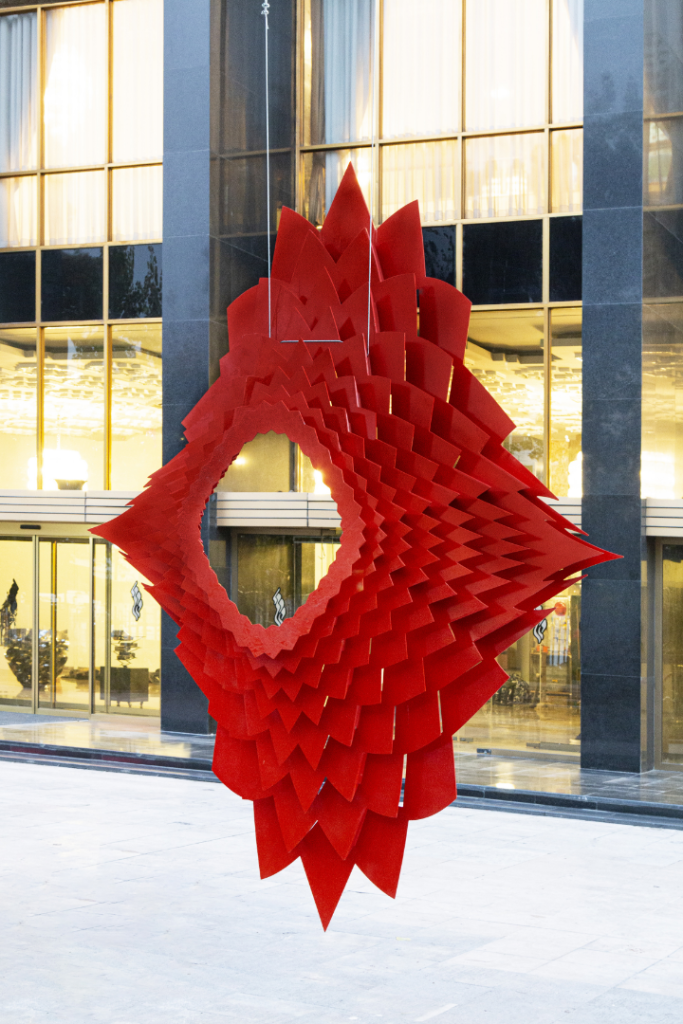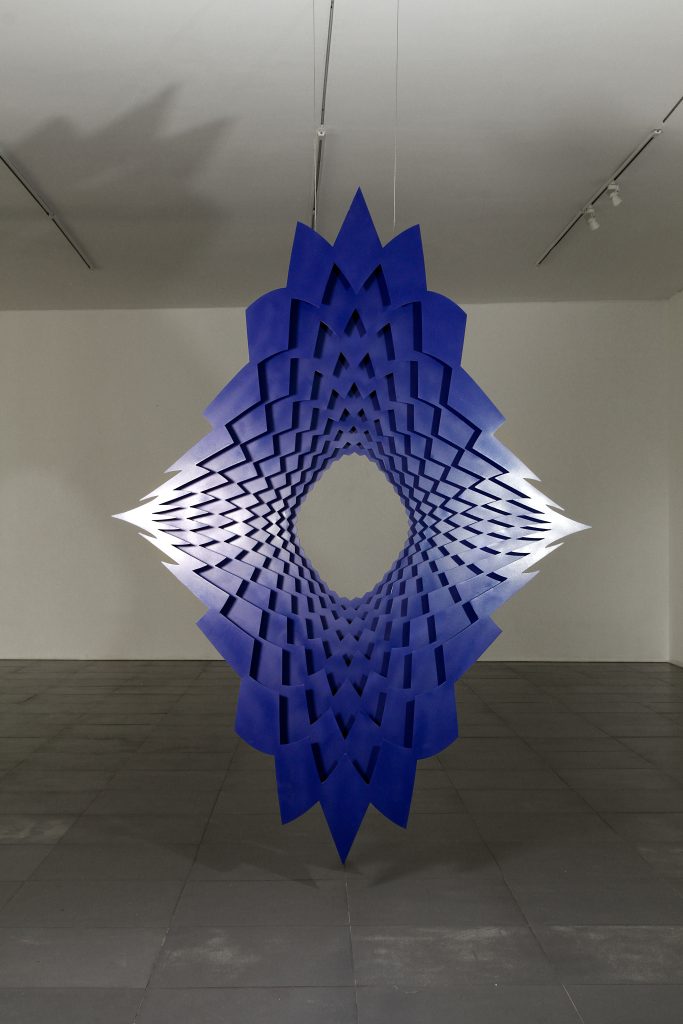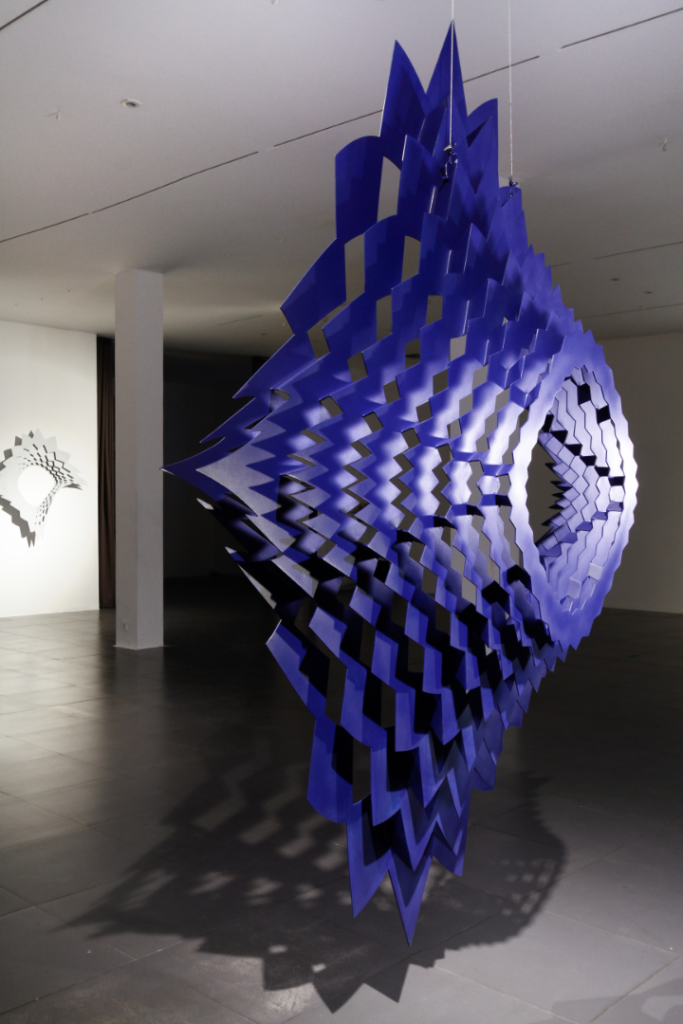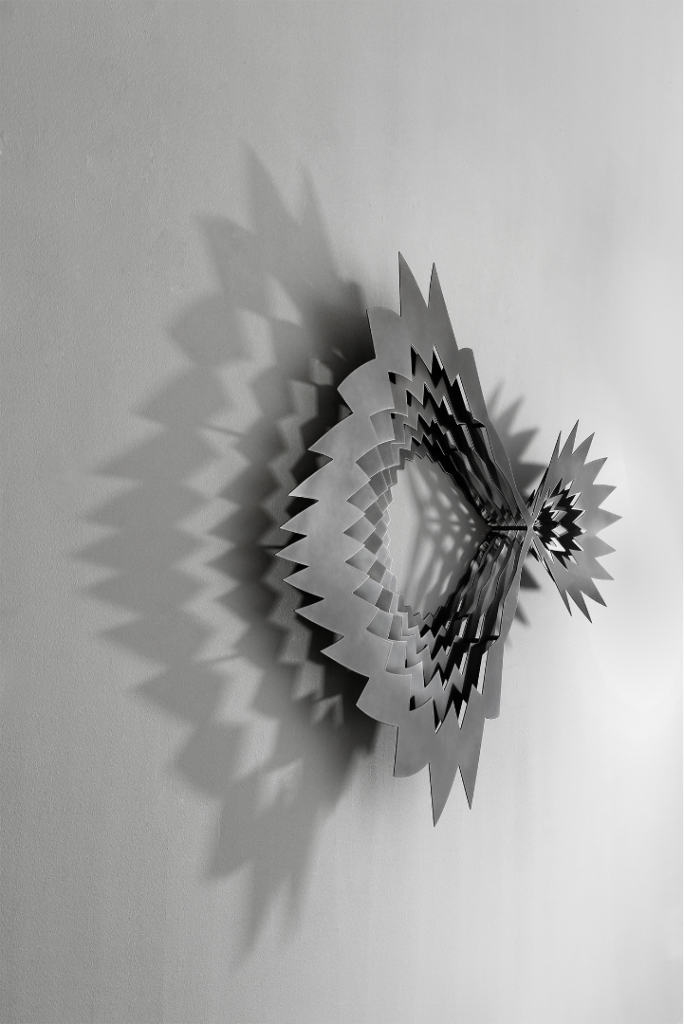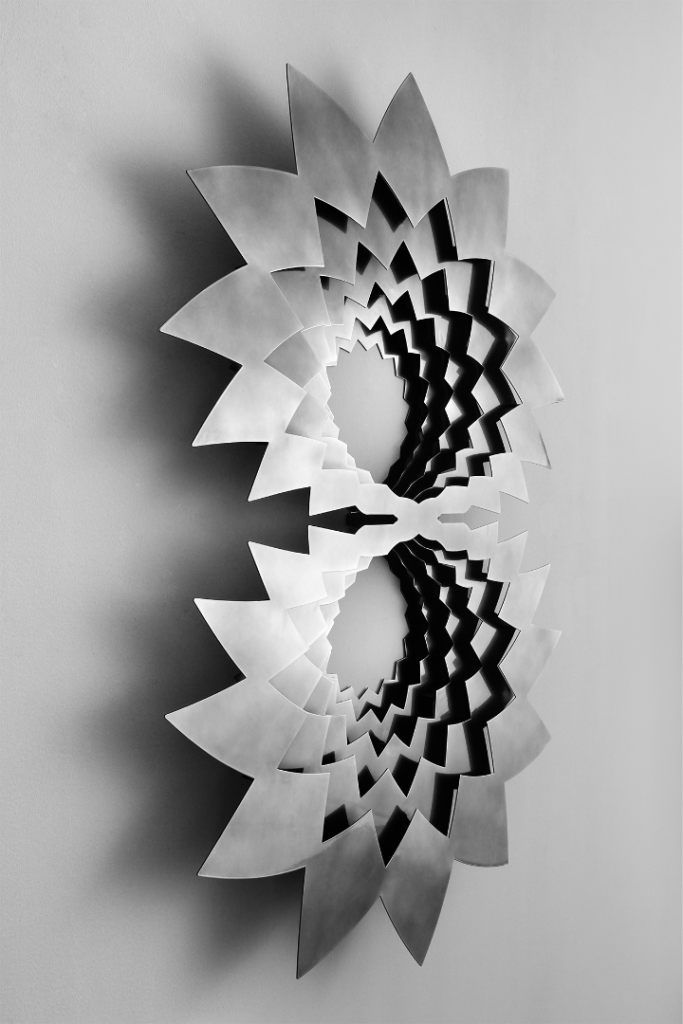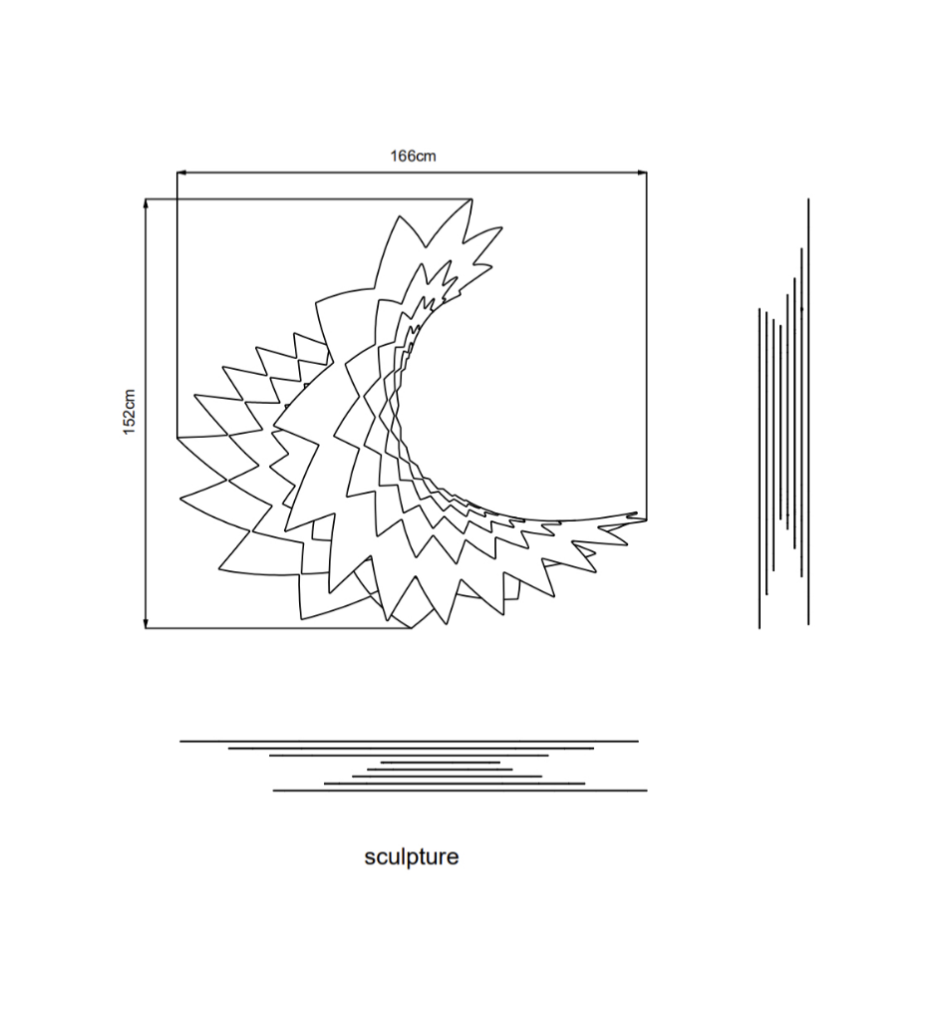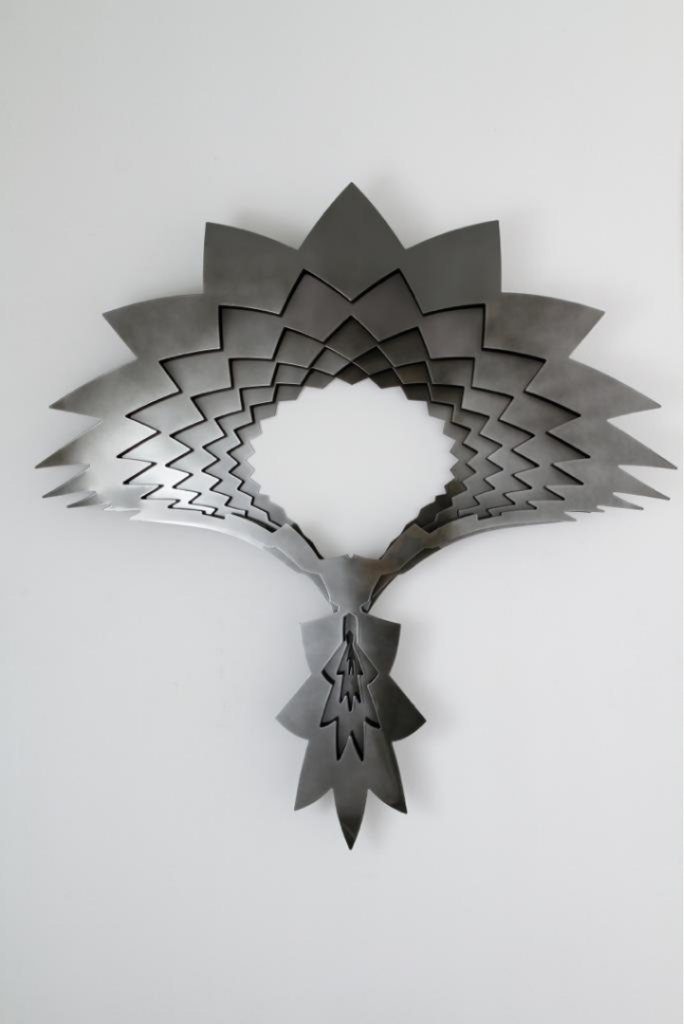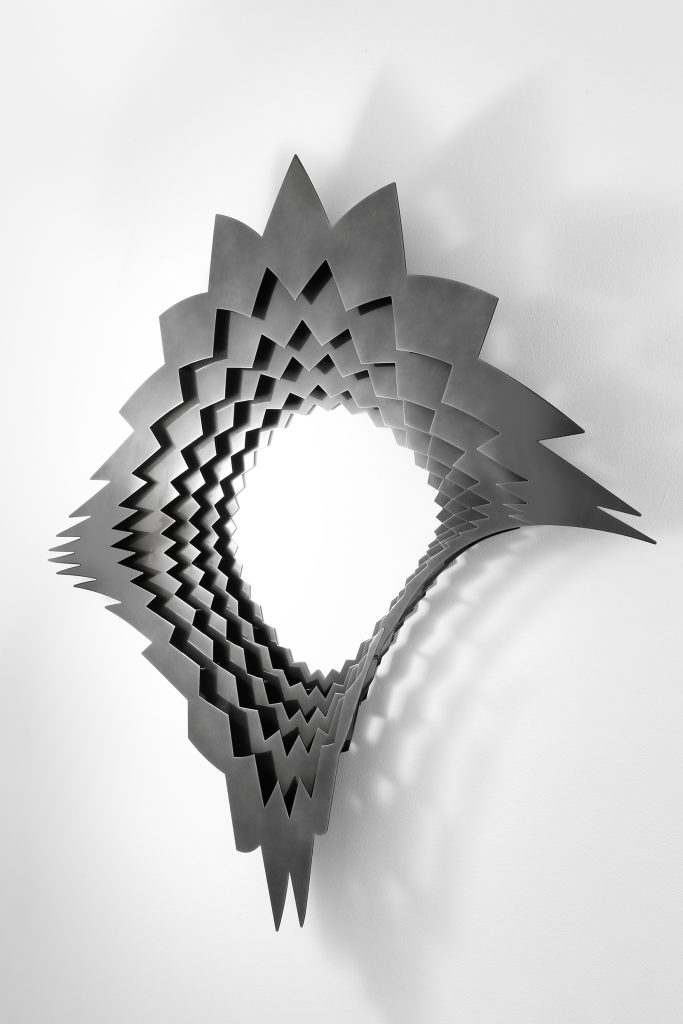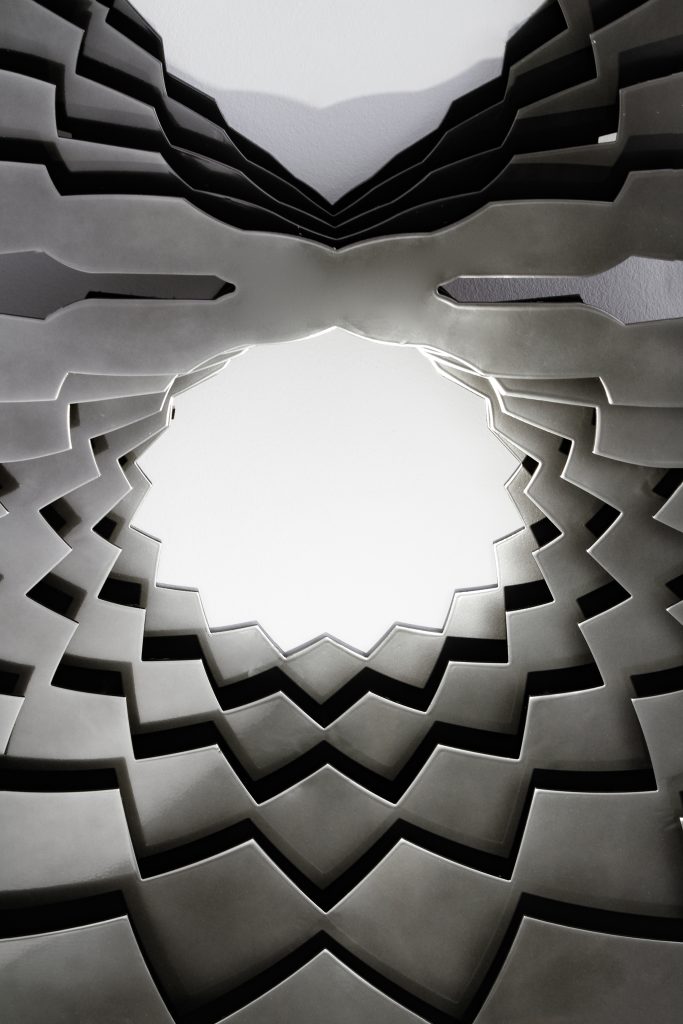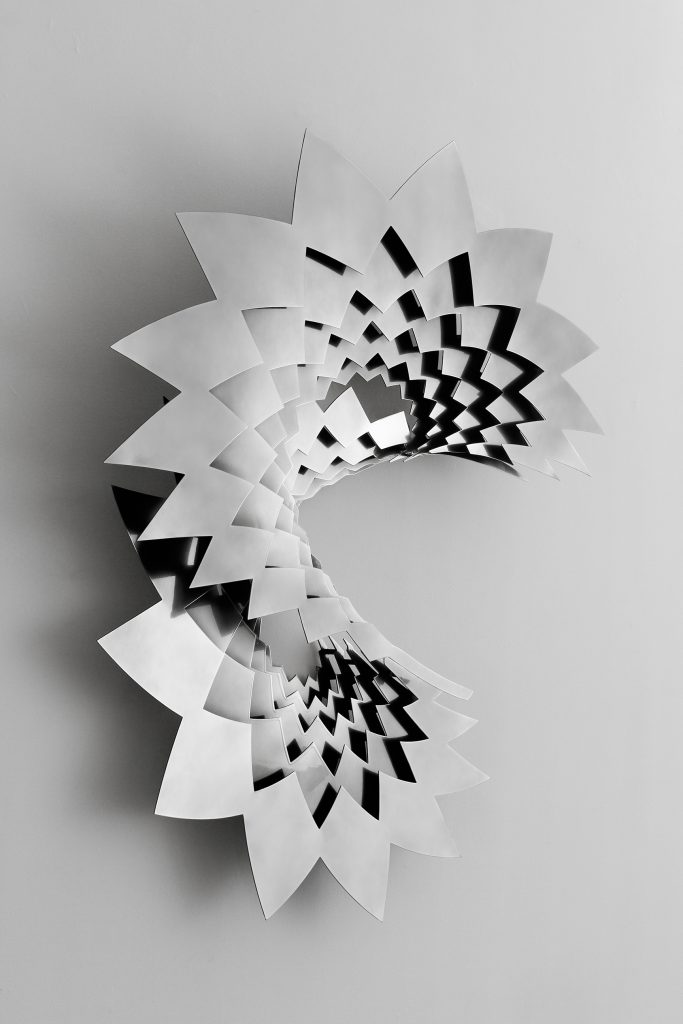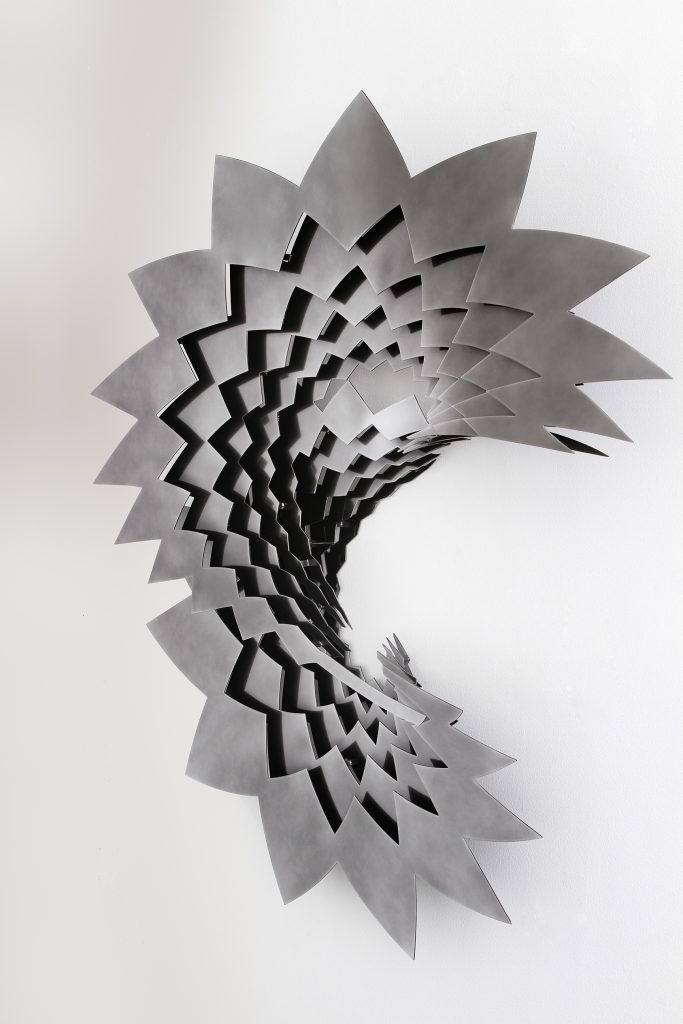A passion with various forms of Islamic geometry was first manifested in my practice of designing jewelry based on Islamic architectural structures (since 2008). It was then accompanied by studies in the field of philosophy, which I later pursued in an academic format, and had a major effect on my attitude towards geometry. Geometry is fundamental in Islamic architecture; fulfilling both structural and decorative goals. The sacred character of mathematics in the Islamic worldview is established in the arts more than anything else. In the realm of Islamic art, the matter becomes sanctified through geometry and mathematics. A sacred space is created from this union which echoes the omnipresence of God. The practice of geometry in the paradigm of Islamic art is meant to fulfill the central goal of this art, which is a passage from multiplicity to union; to induce and reinforce the sense of unity in the worshipper. In Platonic thought, also, the geometrical abstraction acted as a shadow of the world of ideas. The interconnection of geometry and spirituality in Greek art has manifested itself in a devotion to geometrical order, spiral patterns and golden ratios. The significance and status of geometry can be traced all over the history of thought. During the time I was seeking a contemporary reading of geometry, I was absorbed by the process of various interpretations of the truth in different periods of the history of philosophy: in the classical age, it is associated with the world of ideas’; in Modern times, it is being explained with mathematical perception; and in contemporary era it is varied and manifold. As geometry has been associated with both Western and Eastern solid metaphysics, and is grounded on concrete axioms, I found it a proper basis to represent the variations of the understanding of the truth. Girih Tiles, a device in Iranian-Islamic architecture, are made from similar geometrical forms. They represent harmony and balance. They can also be extended from all sides. Their substantial order, purged from any kind of chance and accident, encouraged me to use them as a source of deconstruction, to distort their secure order and arrangement and extend their visual potentials. In Derrida’s system of thoughts, deconstruction is the first step to a new understanding of everything. Inspired by his thoughts, I imposed a twist on the flat structure of the Girih Tile structure, to actually deconstruct and extend its possibilities.
For me, Intervention in these established forms stands for a pursuit in the possibilities of interfering in concrete structures and solid notions. Along with its visual attractions as well as challenges, this devise represents my attitude towards, and engagement with, the philosophical problematic of truth. That is why the structures are made in layers, which represent, in another level, the established order and repetition within the concrete structure of geometry. Instead of extending and proliferating the motifs in the surface to construct new forms, the whole form is repeated in depth. The twist | enacted onto the Girih, which challenges the rationalist, inflexible structure of geometry, makes a metaphor for challenging the idea of the unity of truth. The three-dimensional structures I have made are various angles of a certain original structure. However, none of them exactly matches it, as there is actually no unique original, but a few facets of an absent structure. The absence of the original, central structure is displayed through the present sculptures in the exhibition. Its absence means the impossibility of its presence;
